What's New
Displaying results 4351 - 4360 of 4914
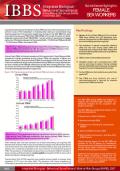
Resource | Fact Sheets,
Unprotected sex between female sex workers (FSW) and their clients is the second most common route of HIV transmission in Indonesia after sharing of contaminated drug injecting equipment. This summary presents key findings of the 2007 IBBS from eight provinces for two groups of FSW: Direct FSWs (DFSW), who consist of brothel- and street-based sex workers, and Indirect FSWs (IFSW) – women working in karaoke bars, massage parlors, etc. Official estimates are that there were 95,000 - 157,000 Direct FSWs and 85,000 - 107,000 Indirect FSWs in Indonesia in 2006.
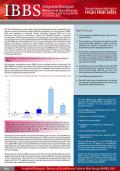
Resource | Fact Sheets,
For HIV surveillance purposes, males in occupational groups known or suspected to be frequent clients of female sex workers (FSW) are considered to be “high-risk men”(HRM). Such men represent an important “bridge” population between FSW, one of the population sub-groups in Indonesia in which the HIV/AIDS epidemic is currently concentrated, and the general population. Surveillance of such bridge groups serves to provide early warning of the potential spread of HIV/AIDS into the general population. In the 2007 IBBS, men were selected from four occupational categories:
- truck drivers (in Deli Serdang and Batang),
- seafarers (in Batam, Medan, Semarang, and Surabaya),
- dock workers (in Jakarta, Merauke, and Sorong),
- and moto-taxi drivers (in Medan, Banyuwangi, and Jayapura).

Resource | Fact Sheets,
Recent regional analyses indicate that unprotected sex among men who have sex with men (MSM) is making an important and at least in some cases growing contribution to HIV/AIDS epidemics in many Asian countries. The 2007 IBBS collected behavioral data from MSM in six cities – Medan, Batam, Jakarta, Bandung, Surabaya and Malang, and biological data in three cities – Jakarta, Bandung and Surabaya. This summary presents the key findings from the IBBS with regard to MSM.
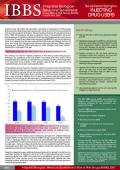
Resource | Fact Sheets,
Injecting drug users (IDU) are particularly vulnerable to the transmission of HIV because sharing contaminated drug injecting equipment transmits the HIV virus more efficiently than any other mode of transmission. Since initial data indicating 19% prevalence among IDU in 1999, HIV prevalence has been consistently rising in this population sub-group and represents the highest prevalence of HIV among identifiable population sub-groups in Indonesia. This summary presents key findings of the IBBS 2007 from two (2) cities from which only behavioral survey data were gathered (Semarang and Malang) and four (4) cities from which both biological and behavioral data were gathered (Medan, Jakarta, Bandung, and Surabaya).
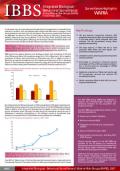
Resource | Fact Sheets,
In Indonesia, men who have assumed a female identity (transgenders or transvestites) are referred to as Waria. Prior surveillance data indicate that Waria tends to engage in risky sexual behaviors, and have high HIV prevalence. This summary presents key findings of the IBBS 2007 for Waria from five (5) cities (Jakarta, Bandung, Semarang, Surabaya, and Malang). Behavioral data were gathered in all five cities, while biological data were gathered in three cities (Jakarta, Bandung, and Surabaya).

Resource | Publications,
The first NBSS on HIV/AIDS 2007, a large population-based survey, obtained statistics on awareness, attitudes, and perceptions about HIV/AIDS and sexual practices among Singaporeans.
The survey is self-administered using the Audio Computer-Assisted Self-Interviewing (ACASI) tool that was developed specifically to gather information on sensitive topics such as HIV/AIDS. It provides an extra measure of privacy as, through using ACASI, the survey can be done in the absence of an interviewer.

Resource | Publications,
The purpose of the Behavioral Surveillance Survey (BSS) is to systematically monitor trends in HIV / STI risk behavior over time. Thus, it is imperative to conduct BSS at certain periodicity to track the behavior change systematically.
The BSS wave III covered the same seven districts (viz., Mumbai, Thane, Sangli, Solapur, Satara, Aurangabad, and Nagpur), which were included in the previous wave. The wave III covers three new groups in addition to the groups covered in the wave II namely: unmarried female college students, unmarried female slum youth aged 15-19 years, and unmarried female slum youth aged 20-24 years.

Resource | Publications,
Behavioral Sentinel Surveys have been carried out by the National AIDS Program (NAP, now known as NCHADS) in five provinces (Kampong Cham, Sihanoukville, Battambang, Siem Reap and Phnom Penh) since 1997. The first year served to supply baseline data, and in subsequent years, the progression of these variables has been monitored.
This publication presents the result of the seventh round of Behavioural Sentinel Survey, which was conducted in 2007. Female (brothel-based female sex workers, beer promoters, karaoke workers, and beer garden workers) and male (moto-taxi drivers) and MSM (short and long hair) were included in this round.
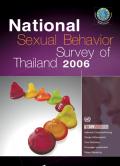
Resource | Publications,
The overall objective of this study is to gather information for use in planning and evaluation of the national AIDS program and related policies.
In the process, a substantial number of the indicators needed by the national program and the international community, are collected and reported based on a nationally representative sample.

Resource | Publications,
Despite the numerous activities being carried out by the Health Ministry of Mongolia with the assistance of WHO, the National Traumatology and Orthopedic Teaching Hospital (NTOTH) and many other international institutions, it is clear that the statistics of violence, traffic and household injury show a trend to growth rather than decline. If no efficient and timely measures are undertaken, violence and injury ranking today as the third leading cause of mortality, may jump to the second position within the next year or two at most.
The main purpose of the report is to table the current situation on health impairment due to violence, its frequency rate, and to articulate the actions undertaken with the aim of preventing
violence.





